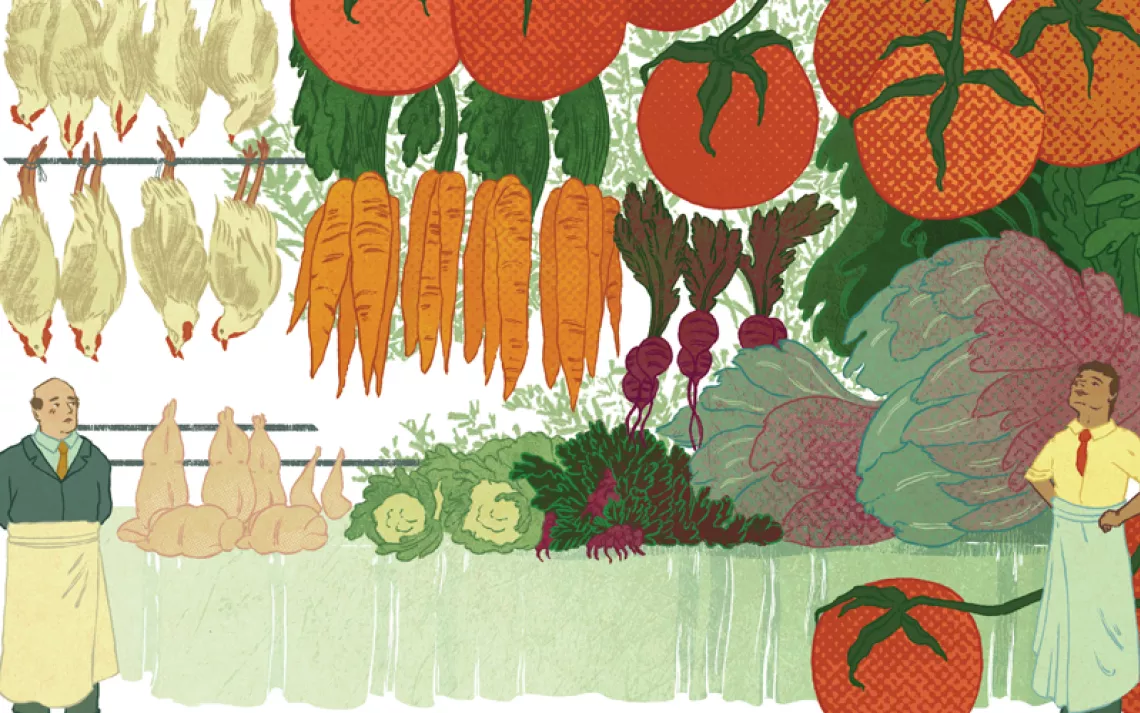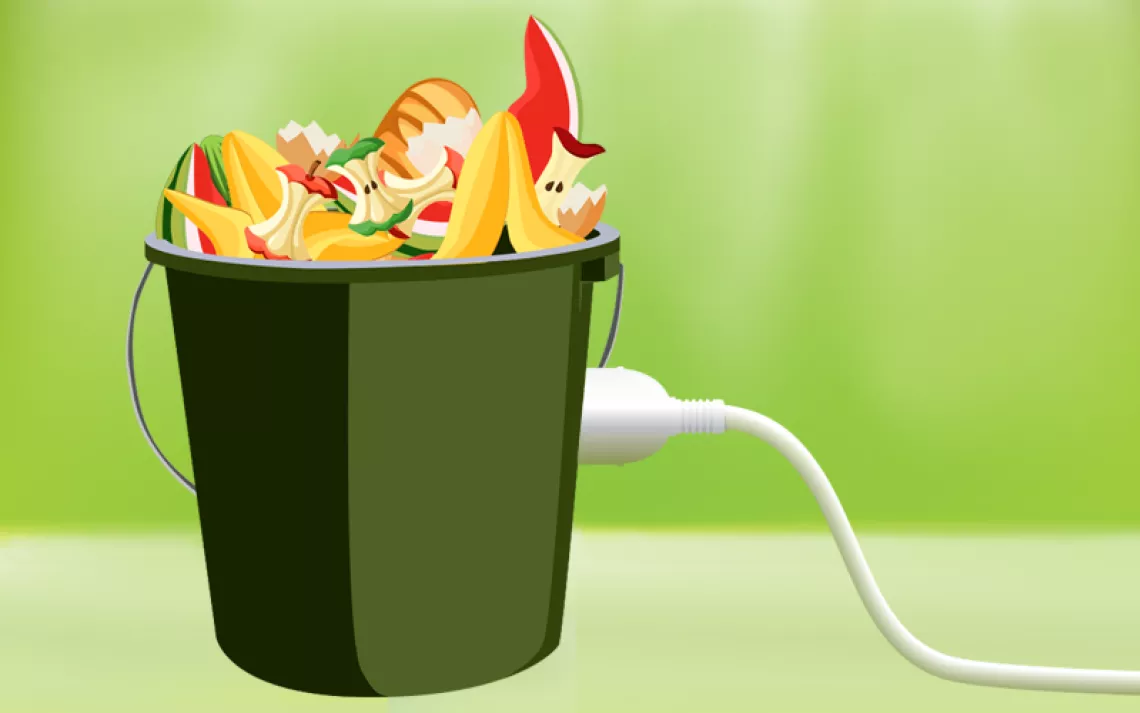Back to the Land
Appalachia is tackling economic woes and boosting its food security with fresh, homegrown produce
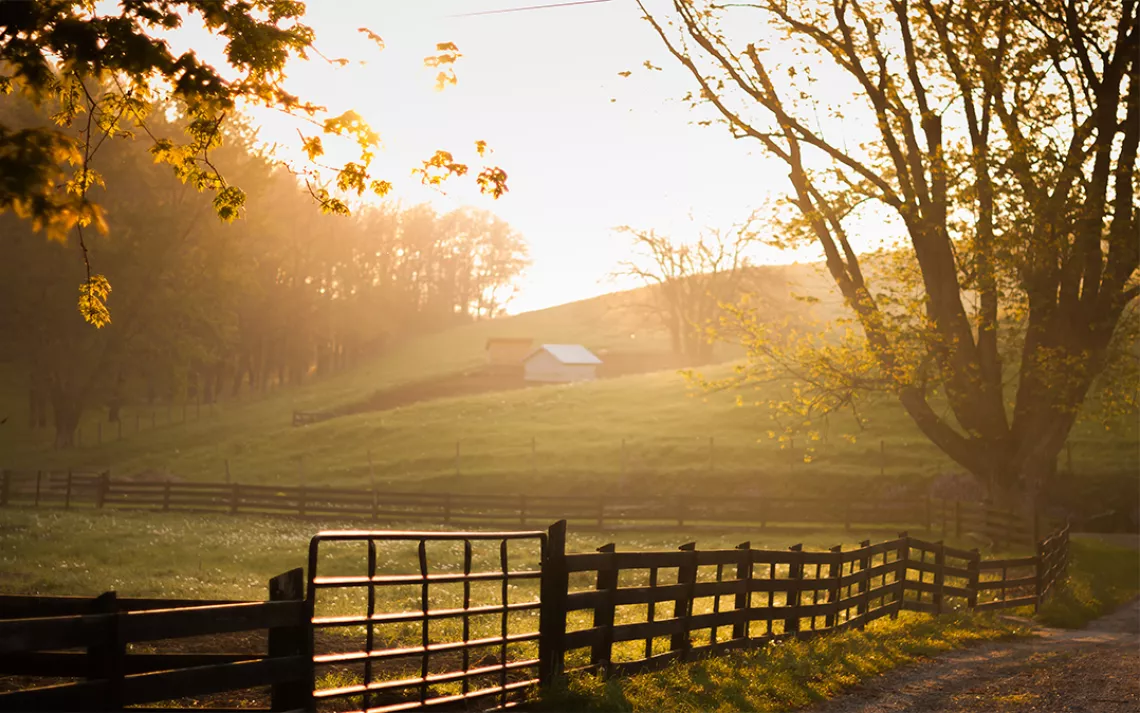
Photo courtesy of Appalachian Sustainable Development
It’s no secret that times are tough in coal country. Poverty has long plagued the coalfields of West Virginia, Virginia, and Eastern Kentucky, where for decades the coal barons took home the spoils while the miners took home black lung disease. Now, coal employment in the region is at its lowest level since 1898. With the renewable energy production growing ever cheaper, it appears the sun has indeed set on the U.S. coal industry. Which begs the question, what’s next for Appalachia, where families have for generations depended on “King Coal”?
In this beautiful, natural resource-rich region, people are known for their deep ties to the land and their culture of self-sufficiency. It’s not surprising, then, that out-of-work Appalachians are increasingly turning back to the fields their forebears once tilled. In this largely food insecure area, such endeavors stand to boost public health and to revitalize an agricultural economy still trying to recover from the demise of tobacco growing.
“A lot of our health issues are related to poor nutrition, which is always disturbing, because we live in one of the most diverse, temperate ecosystems on the planet, and just two generations ago, were essentially self-sufficient in food production,” says David Cooke, a West Virginia native whose ancestors’ labor in the coalfields predates the Civil War. Cooke himself spent years as a county extension agent in the coalfields of West Virginia, where, he says, “I was meeting teenagers who don’t even know that potatoes grow in the ground.” Such ecological illiteracy is part of why he went on to found Grow Appalachia in 2009. The organization has since become one of the nation’s largest community-garden-based food security programs, supporting thousands of home gardens across six states.
Grow Appalachia isn’t the only organization promoting local farming, at-home gardening, farmers’ markets, and other endeavors to boost food security in the region. A range of forward-looking groups are providing year-round sustenance; market infrastructure in the form of opportunities to sell food wholesale and at farmers’ markets; and job opportunities in community kitchens and garden centers. Healthier communities, of course, translate to revitalized towns—places offering younger generations of Appalachians reasons to stay, and ideally, to help develop a robust economy.
Here’s a sampling of the food-security initiatives working in Appalachia today.
Grow Appalachia, Berea, Kentucky
In describing his organization’s work, David Cooke likes to use the phrase science-assisted craft agriculture. “It means we respect the traditions of our forebears who had little money but a lot of ingenuity and understanding of how to keep soil alive and vibrant, and that we also factor in organic agriculture,” he says.
Grow Appalachia and its partners teach Appalachians to overcome some of the obstacles to fresh food—which include geographic isolation compounded by poor or nonexistent public transportation—by starting and maintaining home and community gardens. The organization provides clients with gardening classes focused on organic, sustainable methods (think high tunnels and dry gardening) and how to healthily cook with and preserve the fruits of their labors. “It’s about building infrastructure to help as many families grow as much of their own food as possible,” Cooke says, “so they can eat 12 months of the year.”
Grow Appalachia partners with small, rural nonprofits throughout West Virginia, Virginia, North Carolina, Ohio, Tennessee, and Kentucky. “We put the responsibility and the authority in the hands of these groups, but we fund them and provide templates for data collection,” Cooke says, adding that Grow Appalachia has helped about 4,400 families produce 2.7 million pounds of food.
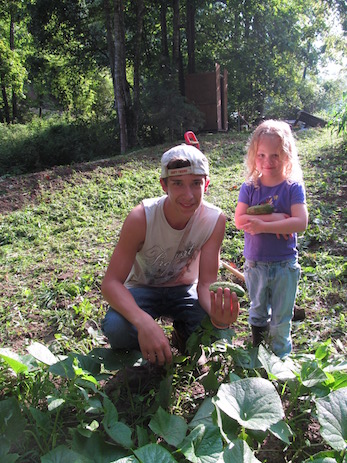
Photo courtesy of Grow Appachia.
While putting food on the table, Grow Appalachia also helps put money in people’s pockets: Home growers sell up to $200,000 worth of their produce annually. “We’re not trying to create the next generation of farmers, just serious gardeners who can feed their families and neighbors, and maybe also put some food into the marketplace, at farmers’ markets and roadside stands,” Cooke says. “We partner with folks to build small community kitchens in these communities so folks can come in and efficiently process or produce food they can sell on the open market, to generate a little money locally.”
Grow Appalachia also moonlights as the fiscal agent of the Appalachian Food Summit, an annual conference that brings together chefs, writers, academics, historians, and foodies to share a locally sourced meal showcasing traditional and innovative techniques in mountain cooking. Cooke says that what started three years ago as a Facebook conversation about pinto beans and cornbread has evolved into an annual dinner presentation that grows each year, with 200 people attending last month’s 2016 summit in Berea.
Coincidentally, Appalachian cuisine is currently striking a chord among foodies. “We’re not really Southern; our region has distinct foods,” Cooke says. “This trend isn’t going to be our silver bullet, but it’s a good catalyst for conversations about local economies, about promoting a sustainable future in fresh food.”
Community Farm Alliance, Berea, Kentucky
Community Farm Alliance (CFA) has its roots in the farm credit crisis of the early 1980s. “That Mellencamp song about blood on scarecrows is not figurative by any means,” says early organizer and current executive director Martin Richards, whose first CFA initiative was to set up a suicide hotline. “Farmers following the advice from the USDA and the land grants were forced to lose their farms—my uncle lost my grandfather’s in 1984—and they said, ‘If public policy is gonna have this effect, we want a voice,’ which is why this group formed, to give them that voice.”
Richards explains that his group advocates for rural quality of life and, to that end, develops grassroots organization around a socially, economically, and ecologically sustainable food and fiber system to feed Kentuckians. “Farm Aid came out of musicians raising awareness about the loss of family farms on the land in 1985,” Richards says, “but eastern Kentucky has dealt with these issues since the consolidation of dairy and the demise of the tobacco program. We’re trying to revive local food and ag, and to make the case that local food is key to economic development.”
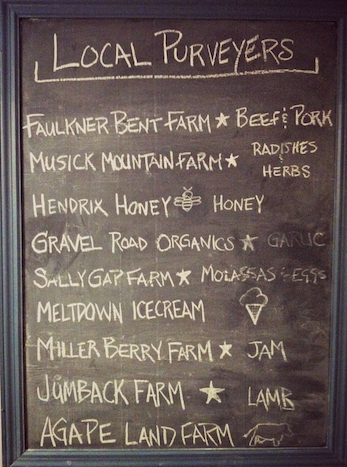
Photo courtesy of Community Farm Alliance.
A lot of farming families, Richards explains, had a hard time making the transition from tobacco. “Before 2004, there was a federal self-sustaining tobacco support system, so every year you knew how much to grow, had a pretty good idea what you were gonna get for it, and could literally do your crop planning on the back of an envelope and take it to the bank and borrow,” he says. Food, however, is a different ball game. “Up until recently, if you were growing a horticultural crop, you couldn’t get crop insurance.”
The CFA aids farmers and consumers largely by keeping close tabs on federal food and nutrition programs, and analyzing ways of diverting funding to support Kentucky’s farmers and food systems. The CFA has piloted programs including an Eastern Kentucky Food System Collaborative, comprised of farmers from 18 counties; a Farmers’ Market Support System; and the “Double Dollars” farmers’ market program, wherein CFA matches every dollar of federal SNAP (a.k.a., food stamps), WIC, or Senior Farmers’ Market Nutrition Programs expenditure. The idea, Richards says, is to “leverage existing dollars.”
Not all CFA endeavors involve crunching numbers. In 2014, the organization launched a storytelling project, a radio show dubbed Breaking Beans. “When you harvest beans,” Richards explains, “everyone sits down and snaps 'em—it’s super communal, like quilt-making, only with food.” CFA created community fellowships for oral historians, who spread out over eastern Kentucky to record people talking about local food and farming. So far the project has collected stories such as that of a coal miner who went from digging coal to digging potatoes, and a nurse who farms healthy produce on the side. “People get inspired,” Richards says of the weekly radio show, broadcast via Appal Shop, a nonprofit Kentucky media organization. “You can present facts and science all day long, but it’s really the anecdotal stories that power change.”
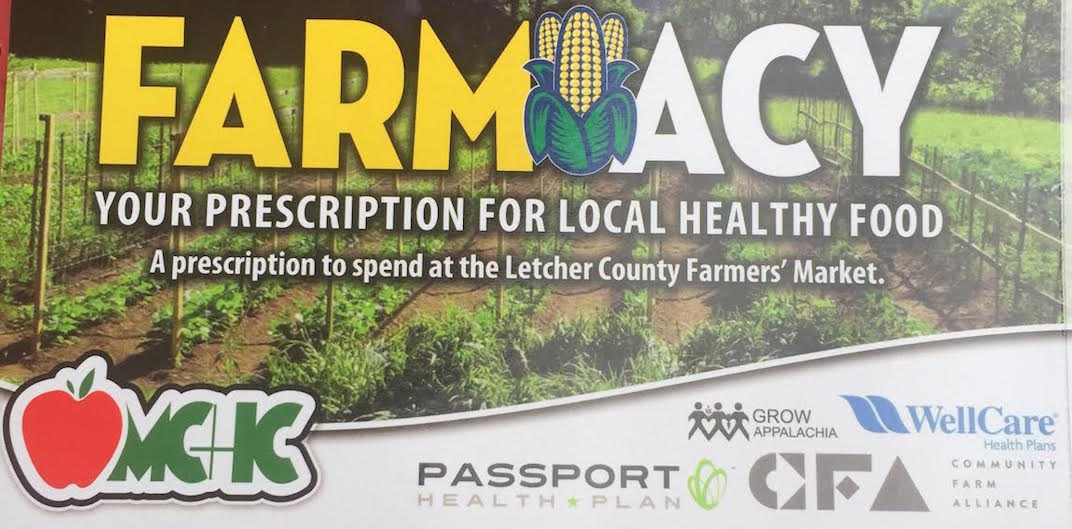
Photo courtesy of Farmacy.
Farmacy, Whitesburg, Kentucky
It’s one thing for doctors to blithely tell you to eat your veggies and another for them to write out prescriptions for zucchini and squash. One of CFA’s more recent endeavors is called Farmacy, a project launched last year to help Kentuckians with diet-related health issues gain access to fresh local foods at the market. The program (a joint initiative with Mountain Comprehensive Health Corporation and Kentucky’s Whitesburg/Letcher County Farmers’ Market) also tracks the health metrics of these patients—most of whom suffer from diabetes, hypertension, obesity, and other nutrition-related conditions—and in the process supplies medical providers with vital data about the connection between fresh food and wellness.
Here’s how it works: Patients of Mountain Comprehensive Health Corporation, one of the country’s largest rural community health centers, are eligible to receive Farmacy prescription cards to bring to the Letcher County Farmers’ Market. “A low-income family of four is typically prescribed $28 a week to spend at the market,” says Valerie Horn, the CFA project director.
But there are a few conditions. Participating patients must agree to have their weight, blood pressure, and other metrics tracked. And the market money can only be spent on fresh fruits and vegetables, honey, and eggs.
“If you hate cucumbers,” Horn says, “there’s no reason to take them home. We want Farmacy patients to have autonomy and choice, to build relationships with growers the same way any shoppers would, by having conversations about food preparation.”
In 2015, 125 patients participated, and companies (including Humana, Delta Dental, and Passport Health Plan) contributed $18,000 in funds. This year, participation jumped to 334 patients, with 66 percent reporting that they were able to purchase enough food during market season to freeze or preserve for winter. The program has expanded to two nearby counties, and Farmacy patients’ medical data is already showing tangible health improvements. “If a family of four all agrees to have their stats measured,” Horn says, “they can double their market money allocation. For the income that most of these people are on, $224 to spend on fresh food each month is huge.”
Talk about a triple win.
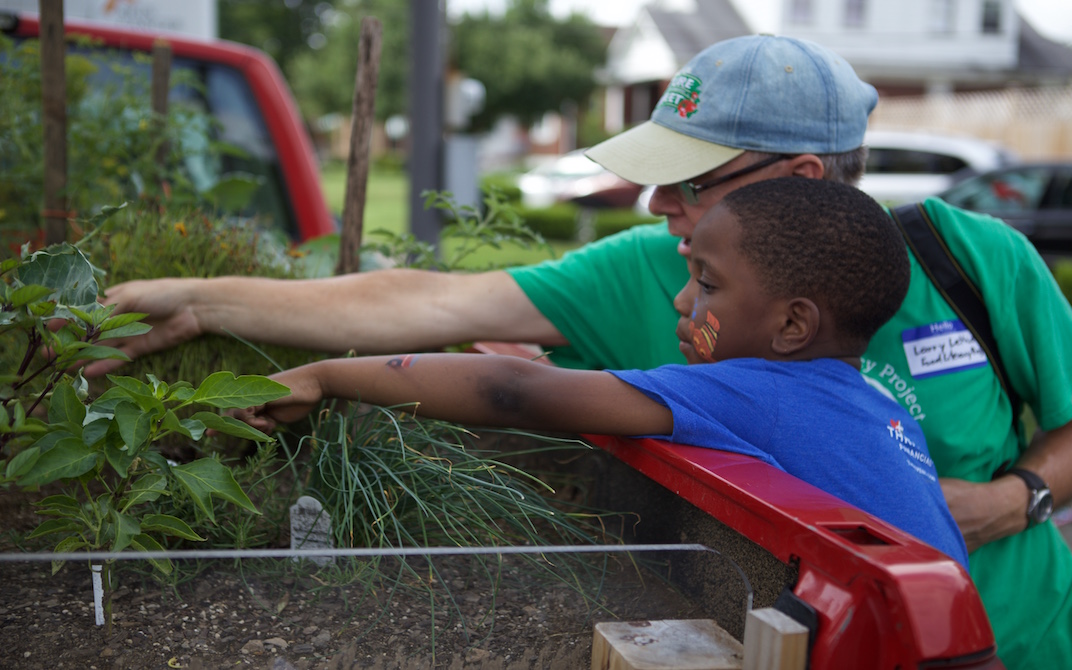
Photo courtesy of the Food Literacy Project/Videobred*.
The Food Literacy Project, Louisville, Kentucky
Last year, this farm-based experiential education program engaged more than 3,400 Louisville youths and their families via hands-on nutrition education. “Everyone can benefit from a positive experience with a vegetable,” says executive director Carol Gundersen. “Everyone remembers a negative one, so we try to emphasize the joys of smelling a garden, of unearthing produce and seeing it again on your supper plate—of the farm-to-fork experience.”
The Food Literacy Project staff and volunteers invite Louisville kids and their families to local farms, where they can help harvest produce, learn about plants and soil cycles, and otherwise “explore the stories behind their food,” says Gundersen. She explains that these kids typically qualify for free lunch programs and live in fast food-saturated areas lacking adequate access to fresh food. “We target those populations most at risk for diet-related illness—they need this experience the most.”
In 2015, the 10-year-old organization made the fields even more accessible by launching a “Truck Farm.” Gundersen says this mobile farm, situated on the flatbed of a large, fire-engine-red pickup, had been a dream for years. The Food Literacy Project takes the farm to the kids, typically by parking the truck outside schools and community events and inviting classrooms out to engage kids’ senses, while letting them scavenge from the garlic and edible herbs growing in the truck’s bed. “It’s been received with a lot of wonder and joy,” says Gundersen, “ and a delight that we can actually eat plants—a new and exciting concept for young people who are just beginning to connect the dots about how food grows, and to uncover the rich stories behind their food.”
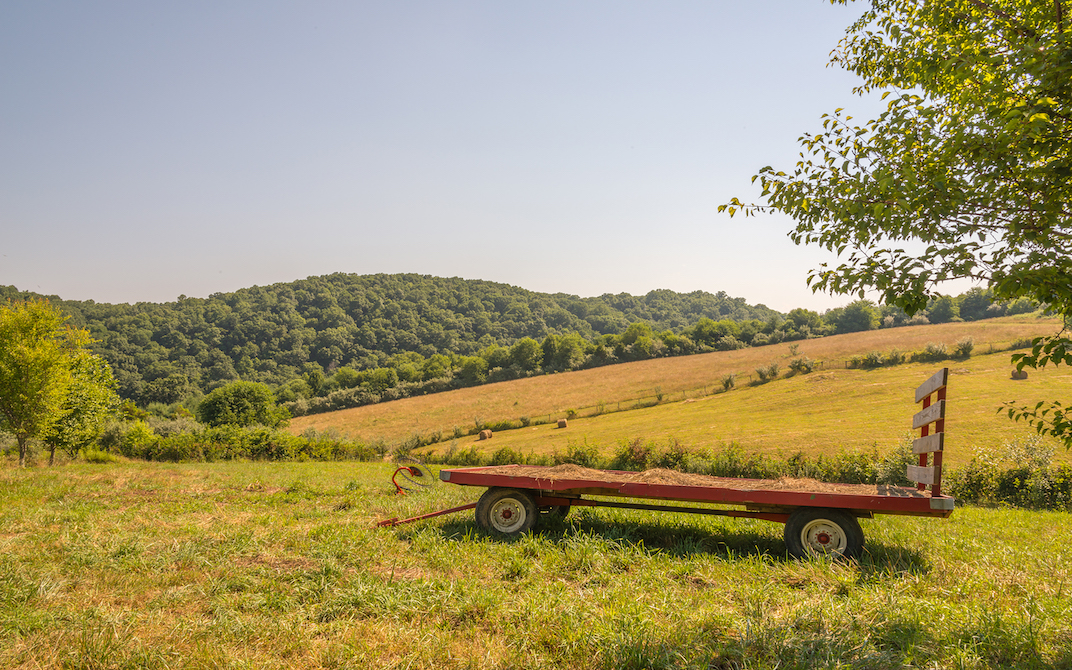
Photo courtesy of Appalachian Sustainable Development.
Appalachian Sustainable Development, Abingdon, Virginia
An economic development organization, Appalachian Sustainable Development launched in 1995, partially to help struggling tobacco farmers transition to growing fruits and vegetables they could sell via large wholesale markets. “It was about addressing the ‘jobs versus environment issue,’ and finding nonextractive ways to earn incomes on their land,” explains executive director Kathlyn Terry. ASD’s efforts were so successful that in 2000, it launched Appalachian Harvest, a food hub that has since earned small farmers almost $12 million by securing retail orders from major grocers like Whole Foods and Ingles Markets; providing training in food safety, handling, and organic certification; and aggregating and delivering produce to distribution centers.
The organization evolved from there. Today’s offerings include outdoor garden classrooms for kids, a “seconds produce” donation service for imperfect-looking fruits and veggies, a farmers’ market association, backyard garden training, and farm business education. So, what’s next for this grandmother of food activism?
Terry says the organization is developing a wholesale distribution corridor connecting West Virginia, Virginia, and Ohio farmers with large East Coast markets. “The project will build the support services and logistical pathways necessary to make this a profitable venture for Appalachian farmers,” she says, adding that, when aggregating food products, a large tractor trailer boosts efficiency and is more climate-friendly than a smattering of local pickup trucks. Terry says the reason there isn’t much large-scale agriculture in places like West Virginia is that it’s hard to get food out of the mountainous region. “The topography here is challenging, and it impacts distribution.”
Coalfield communities are largely forested, which means there isn’t a large amount of tillable land. It’s why ASD is also working to foster more of a market for Appalachian forest botanicals. “You can’t grow tomatoes on mountainsides,” Terry says, “but a healthy forest produces a tremendous number of products that are very high in demand”—ginseng, goldenseal, ramps, and false unicorn root—”and the goal is to help people access that demand in healthy ways that respect the environment.… It’s an untapped opportunity for folks in some of the hard-hit coal areas.”
 The Magazine of The Sierra Club
The Magazine of The Sierra Club


